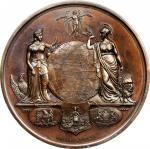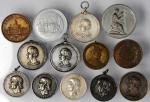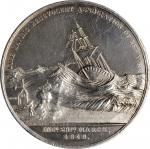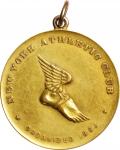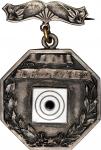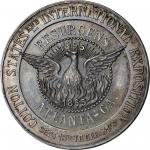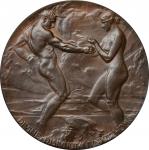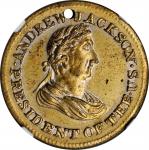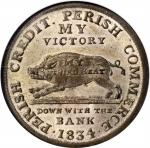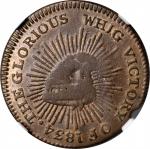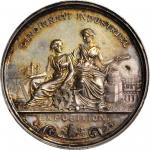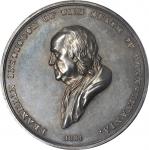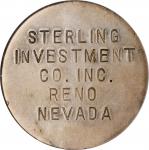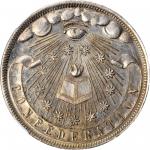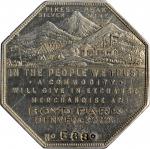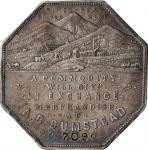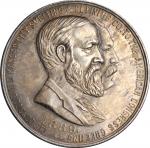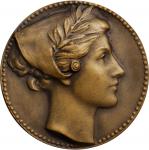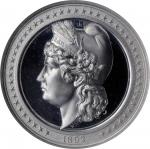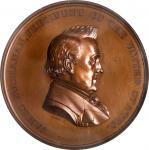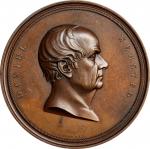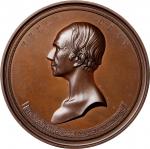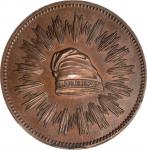1910 Telford Medal. Gold. 58 mm. 121 grams. Eimer-1206, BHM-1328. By Joseph and Alfred Wyon, after William Wyon. Mint State.3.5 mm thick at the rims. <strong>Obv:</strong> Bust of Thomas Telford facing left with TELFORD behind. J.S. & A.B. WYON AFTER W. Wyon R.A. on truncation. <strong>Rev:</strong> Scene of the Menai Suspension Bridge with boats passing under and a forested shoreline in the foreground. INSTIT : CIV : ENGINEERS. / INCORP : 1828 below. <strong>Edge:</strong> CHARLES MATTHIAS JACOBS, M. TRUST. C. G., SESSION 1909-1910.<p><p><p>An impressive medal that marks an historic milestone in New York City history. Weighing nearly 4 troy ounces, this piece is struck in dramatic high-relief with considerable swirling die polish on the obverse bust of Thomas Telford. The surfaces show vibrant yellow gold coloration with honey shades around the truncation and apricot patina at the edges. The rims feature subtle engine-turning which produces a lovely rippled texture. A minor test mark is noted on the obverse at 2 oclock along with a group of shallow marks on the neck of the bust. Faint traces of filing appear at the upper rims and at 9 o’clock on the reverse. Hairlines are noted in the right field behind the bust and below the clouds on the reverse, but they fail to distract from the overall complexion. Also included is the original leatherette case lined in purple velvet with an intact, functioning clasp. The case is lightly worn with a portion of delamination at the lower right edge. An intricate and captivating piece to examine in-hand. <p><p>The Telford medal was first announced by the British Institution of Civil Engineers in 1835 following a bequest from Thomas Telford, who was the organizations first president. The medal was intended to recognize innovation in the field of engineering and is open to engineers from all over the world. The dies for this medal were originally engraved by William Wyon, who was the chief engraver at the Royal Mint from 1828 until his death in 1851. However, new dies were produced by Williams nephews, Joseph Shepherd and Alfred Benjamin Wyon, circa 1870 according to Eimer. It is this revised design that we see here today, as indicated by the three initials on the truncation. While the medal was first awarded in 1837, all of the medals are dated 1828 in exergue which marks the year the Institution received a royal charter from King George IV. <p>Initially, these were struck in gold, silver and bronze, and it is the latter two versions that are most often encountered. However, it has been almost exclusively presented in gold since 1901. The gold examples are highly coveted and rarely come to market. We are aware of just one other specimen that has been offered publicly over the past decade. <p><p>This particular specimen was awarded in 1910 to British engineer Charles Mattathias Jacobs for his construction of the North River Tunnels linking New Jersey and Manhattan beneath the Hudson River. These tunnels were commissioned by the Pennsylvania Railroad Company to establish uninterrupted rail service between Philadelphia and Manhattan for the first time. Chief Engineer Jacobs began working on the designs for the project in 1902 and started construction in 1904. Excavation of the bedrock began simultaneously on each side of the Hudson, with two teams working towards each other building tubes of iron and concrete beneath the river. When the first tubes were united in September 1906, they formed the longest underwater tunnel in the world. The North River Tunnels were officially opened in November 1910, shuttling trains between Weehawken, NJ and Pennsylvania Station in Manhattan. <p>Over a century later, these tunnels are still being used by todays commuters. They currently allow a maximum of 24 one-way train trips per hour, for a total of 48 trains between the two tunnels. Traffic reached a peak in the late 2000s, when over 430 trains were making the commute per day . The tunnels were flooded and extensively damaged by Hurricane Sandy in November 2012, resulting in increased delays that have frustrated commuters ever since. They are currently scheduled to be refurbished as part of the $20 billion Gateway Program that is planned to be completed in 2026. <p>This exceptional medal is highly desirable and will appeal to a wide variety of collectors including fans of transportation, engineering, New York City, and medals of the Royal Mint. Its superior execution and aesthetic beauty are matched by its historic significance, and such an offering may not occur again for quite some time.


